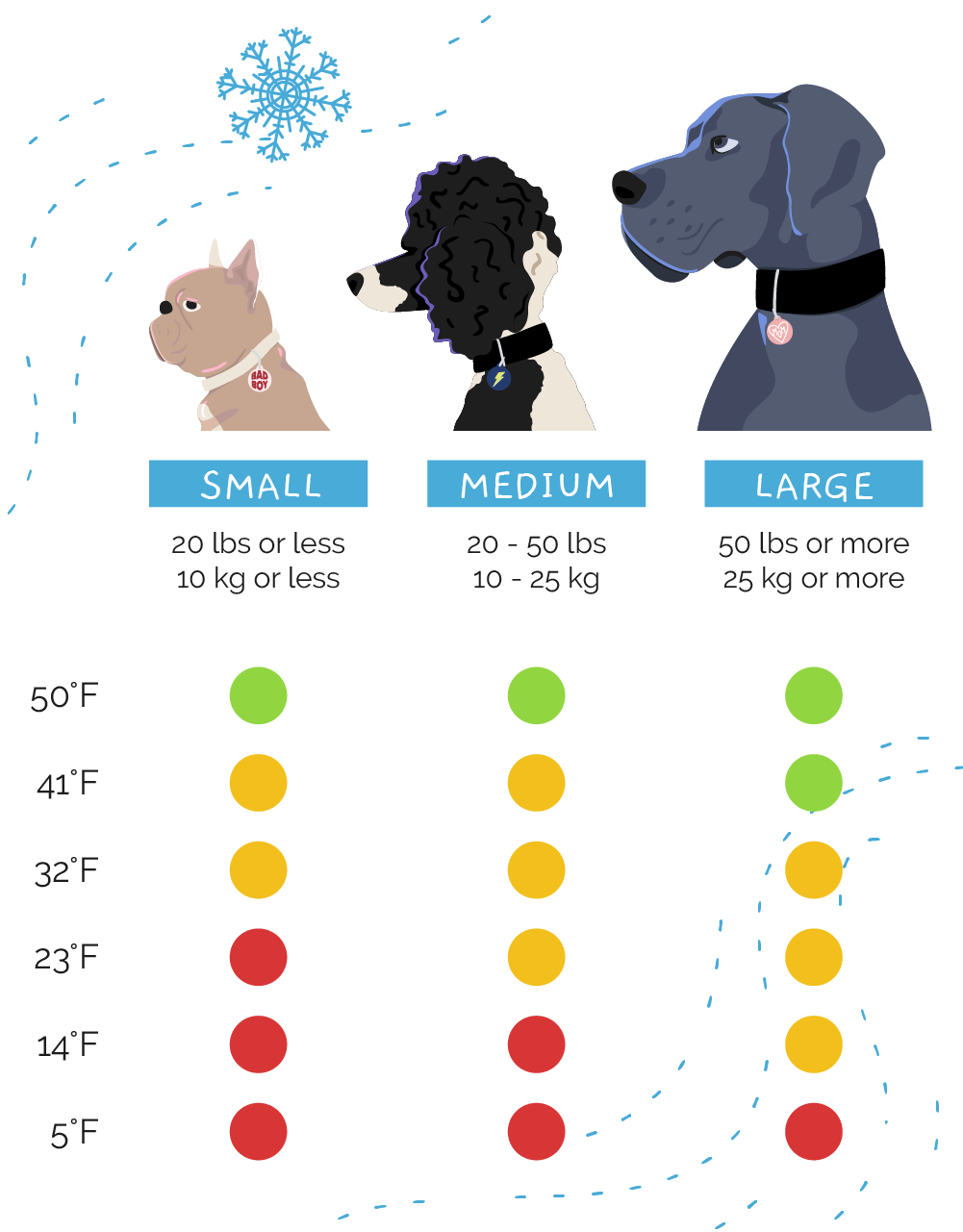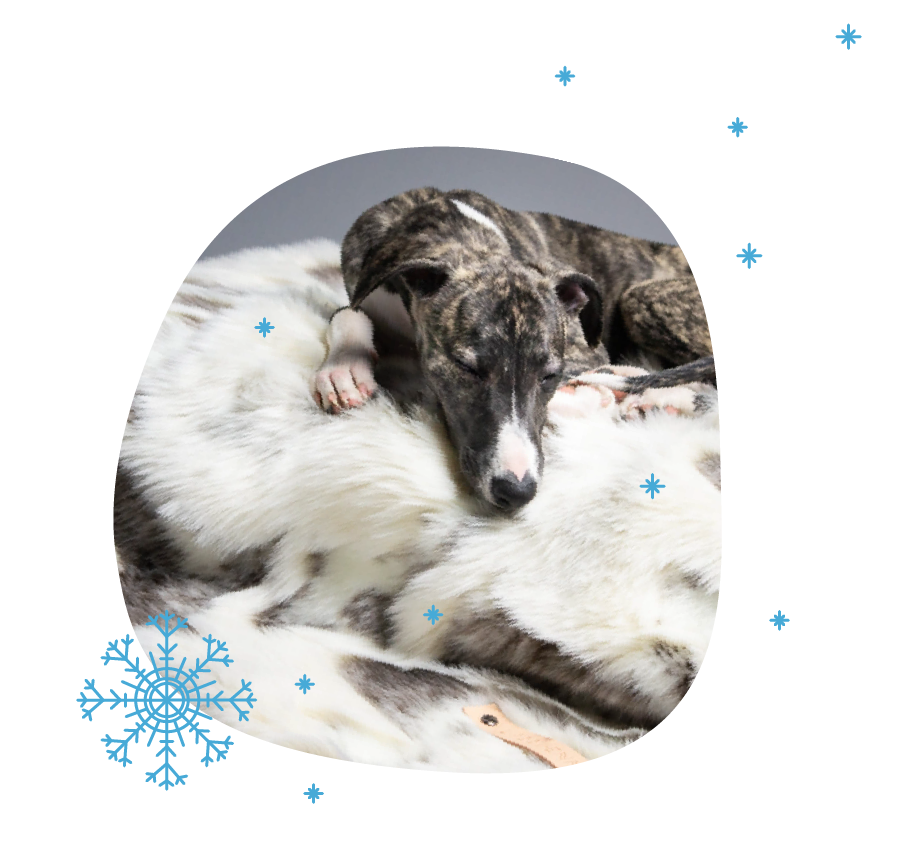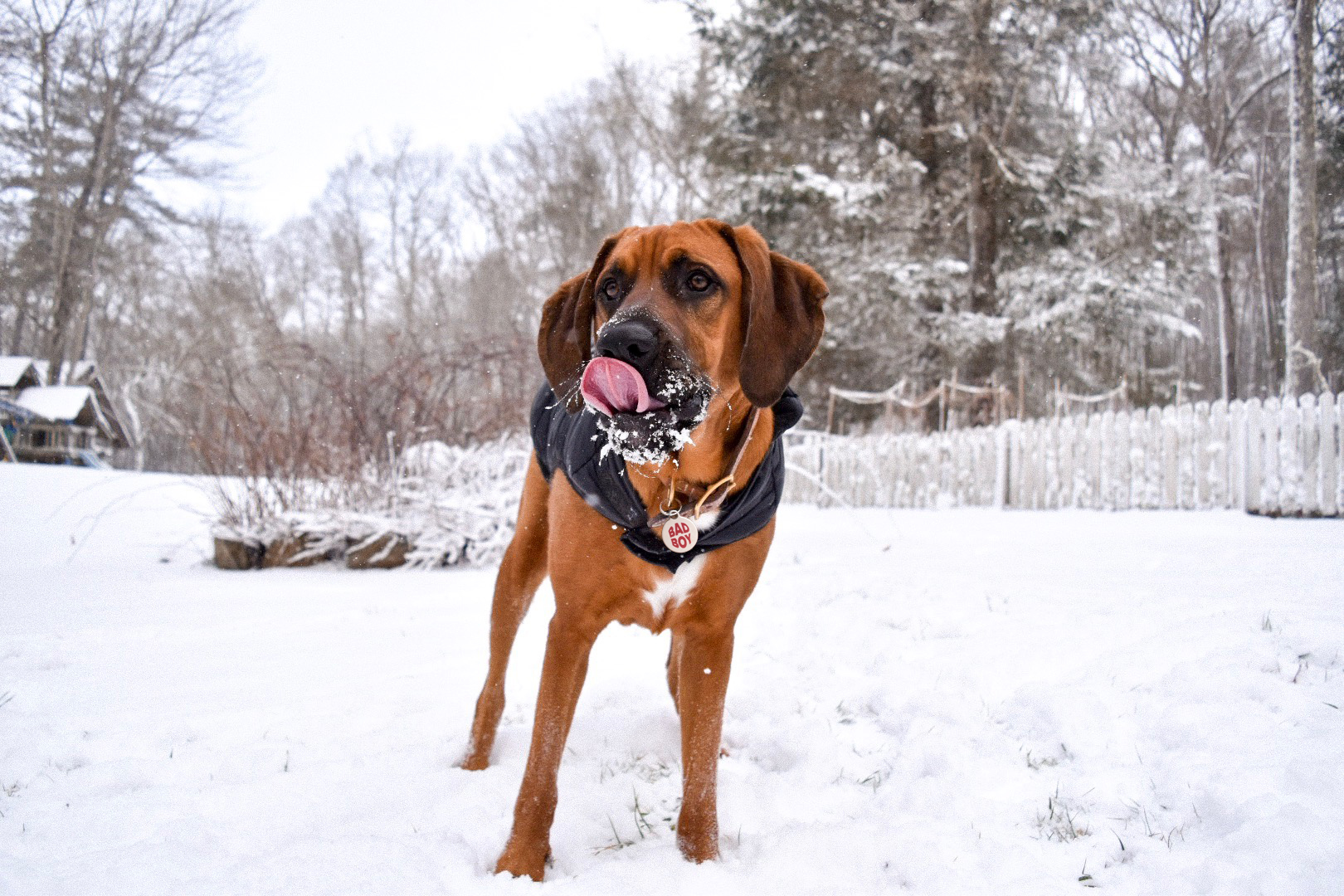The winter months are finally upon us, ushering in freezing temperatures and blustery cold days. And yet, despite the frosty air and blustery wind, you still have to take your dog outside to go on walks.
So you may be wondering: do dogs get cold in winter? And how can you tell if your pup is too cold?
This winter care guide for dogs shares everything you need to know about dogs and cold weather, including how to tell if your dog is too cold and what to do when they are feeling chilly. Follow these tips and you’ll be on your way to ensuring your pup’s nose is the only part of them below body temperature this season!
HOW COLD IS TOO COLD?
First things first: do dogs get cold in winter?

Despite that thick, heavy coat of fur, dogs can still feel chilly and even experience frostbite and hypothermia. So how cold is too cold for your dog? While exact temperatures may vary from breed to breed, most pups will start to feel a little chilly at temperatures below 45°F. And once temps go below 32°F, it’s a good idea to limit the time your dog spends outdoors and take extra precautions to keep them warm. In other words: if it’s too cold for you, it’s probably too cold for your dog.
Note that puppies, smaller dogs, and breeds with short or thin coats are more susceptible to the cold than say, a full-grown Husky or Newfoundland. You should take extra precautions to keep vulnerable pups warm (more on that below!).
WARNING SIGNS THAT YOUR DOG IS TOO COLD
How can you tell if your dog is getting cold? Here are some common warning signs that signal you should get your pup to a warmer place:
- Shaking, shivering, or trembling
- Slowing down or stopping while on a walk
- Hunched posture with their tail tucked between their legs
- Whining or barking
- Lifting their paws off the ground
- Seeking out shelter
- Ears and nose feel very cold to the touch
If it’s cold outside and you start to notice any of these symptoms or behavior, try to move your dog to a warmer place as soon as possible and see if these signs improve.
HOW TO PROTECT YOUR DOG FROM THE COLD OUTSIDE
Despite the freezing temperatures outside, you still have to take your dog out for the occasional walk and bathroom break. Here are some ways you can protect your pooch from the cold, even on the coldest days.

Sweater up!
Consider dressing your pup in a warm sweater or jacket, particularly if they’re small or have thin coats. While your dog might resist wearing clothes at first, they will likely get used to it after a while. If you’re unsure if your dog needs a sweater, check out our guide Should Dogs Wear Clothes in Winter?

Protect the paws.
During the winter, your dog’s paws can take a beating with all the snow, ice, and salt on the ground. You can help protect their feet by dressing them up in booties, which will not only keep them warm but protect their paws from drying out from any salt or dry air. These super cute and practical booties are from Canada Pooch!
If your dog refuses to wear booties, fear not! There are some other solutions. Paw balm is a great way to reduce dry skin and salt damage. Simply rub it over their paws after returning from walks to keep their paws soft. Another tip is to use a towel. At the end of your walk, dip your dog’s paws in some lukewarm water and then use the towel to rub off any salt and ice that may have stuck to their paws during the walk.
Limit time outdoors.
It might go without saying, but if you’re concerned your dog is too cold, then it’s best to limit time outdoors. Take them out for brief bathroom breaks, and then head back inside where it’s warm. If you can, reserve longer walks for the warmest parts of the day.
Make sure they’re getting plenty of calories.
Your pet uses more energy in order to keep their body temperature up while outside in the elements. Keeping your pet well-fed on protein-rich foods will give them more calories to burn, which in return helps them keep warm when outside. It’s also very important to make sure that your pet stays properly hydrated. Make sure they’re drinking plenty of water and check their water sources often to see if they are frozen over.
Tags can be a life-saver with "snow blind" pets.
Putting an ID tag on your pet's collar is always a good idea. Even more so during the winter season, as statistically more dogs are lost at this time of year. This is mainly due to the fact that pets can more easily lose their scent in the snow and cold rain, making it hard to find their way home. Make sure they’re wearing pet ID tags and that they’re accurate and up to date. Don’t have a dog tag? You can get one from – ahem! – yours truly here at Dog Tag Art.
KEEPING PETS WARM INSIDE
So you’ve considered some ways to keep your dog warm while outside, but what about keeping them warm while inside? Yes, your dog can get cold inside your house, too!

Give them a cozy blanket.
If your dog sleeps in a colder or draftier part of the house, it’s a good idea to give them a blanket. This cozy blanket is from Make Them Roar! And if their sleeping place is really cold, consider moving it to another part of the house that’s warmer. Soft and cushioned dog beds can also help keep them warm and cozy while sleeping.
What keeps us warm may be dangerous for pets.
Even within the confines of a warm familiar home, pets will look for a heat source and generally stick close to it. Keep this in mind and take a minute to pet-proof your residence for the winter months by checking to see that fireplaces, electric heaters, and parked vehicle engines are safe from your furry friends looking for a heated place to rest their heads.
DOGS & COLD WEATHER: THE BOTTOM LINE
Keeping your dog warm in the winter takes a little bit of extra care and attention, but your pup will thank you for keeping them warm, healthy, and comfortable. Use your best judgment, look out for warning signs, and follow these tips to help protect your pet against bitter winter conditions. When in doubt, limit time outdoors and remember: if it’s too cold for you, it’s probably too cold for your dog.
Do you have tips for making sure dogs and cold weather get along this season? Let us know below.


